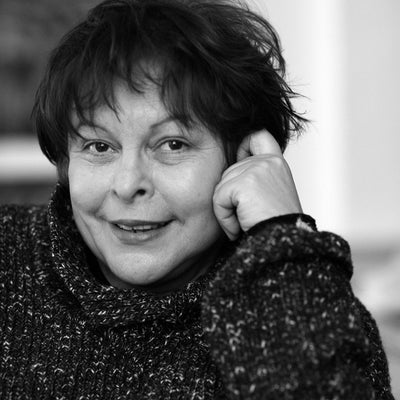Luzia Simons is a Brazilian artist who has lived abroad for about 40 years and has lived in several different cities. She is dedicated to the construction of images through photography and video, and also has works of spatial occupation such as performances and installations. The artist has participated in important group shows at institutions such as the Curitiba Biennial (2013), the Museum der Moderne (Salzburg, Austria), Kunsthalle Emden (Emden, Germany), the Tokyo Art Museum (Tokyo, Japan), the Museum of Modern Art of São Paulo, and individually at the Istanbul Biennial (2005), the Museum de Buitenplaats (Eelde, Netherlands), and the Centre d'Art de Nature (Château Chaumont-Sur-Loire, France). His work is part of national and international collections, such as those of the Museum of Modern Art in Rio de Janeiro, the Fonds National d Art Contemporain (Paris, France), the Graphische Sammlung der Staatsgalerie (Stuttgart, Germany), the Casa de las Américas (Havana, Cuba), the University of Essex Collection of Latin American Art (Essex, England), among others.
Over a decade ago, trying not to become a hostage to new technologies, she began using the scanner as a work tool and, as a result, developed her own production method. The artist uses a common scanner, which captures images through a scanning method, thus managing to construct a representation of the object with rich detail and clarity. An important characteristic is that, unlike a photographic lens, the scanner focuses equally on everything above it, on everything that touches it. What is in the background gradually disappears, thus creating a sense of depth. This is reinforced in works such as the Stockage and Circles series, in which the artist creates a montage in diasec. The thickness of the acrylic and its transparency reaffirm the three-dimensionality and tactile sensation of these works. It is worth clarifying here that, despite her intense relationship with the scanner, Luzia Simons also uses other instruments, such as cameras, in her production.
The scanner is not only used for the series mentioned above, for which she is well-known internationally. In "Transit", the artist digitizes various documents needed for transit between different countries. These include passport pages, visas, and more. Luzia Simons materializes and reflects on these passages and the need to prove that one has been there.
The artist approached flowers through her interest in researching colors in the most direct way, and combined this with her appreciation for still lifes. The tulip is an icon in her work. This is not so important by chance. It is a symbol of cultural displacement: its origins take us to Turkey and Kazakhstan, but it is also a symbol of identity for the Netherlands. Luzia Simons works with her representation in different ways; in many works, there is an abstraction of the plants, cutouts are made, compositions that leave us wondering whether it is really a tulip. However, something that remains is the visual reference of Dutch painting from 1600, especially in the treatment of light.
Luzia Simons seeks, with all her choices, a way to talk about the transfer of culture. This is the central point of all the artist's works. Her own detachments led her to reflect on the transition of customs and ways of living, on how changes can alter the cultural identities of an object, a person or a people. Her art is superficial, but it is also contact art.
As Prof. Werner Knoedgen points out: “The fact that every transplant, every change of culture represents a painful loss of continuity, but in the context of the dialectic of each and every exchange also means a no less important enrichment of identity, is a theme that the artist has been developing for quite some time.” (“Luzia Simons” - Prof. Werner Knoedgen – 2006)



















